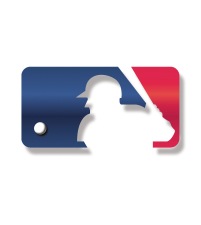 MLB.com published their Top 100 prospect list on Tuesday evening.
MLB.com published their Top 100 prospect list on Tuesday evening.
As expected, the Texas Rangers’ shortstop prospect Jurickson Profar was listed as the best rookie-eligible player in the game. The Baltimore Orioles’ Dylan Bundy came in second and won the crown as the best pitching prospect.
There is plenty of Major League news to keep up with, especially when factoring in the time difference. Covering all the Minor League news as well can often be a time commitment too far and the wealth of online resources about prospects, whilst being a goldmine to those with a keen interest in the topic, can only serve to overwhelm the rest of us.
What I want to know about prospects is essentially:
- Who are the best prospects in baseball?
- Who are the main prospects at each team that I should know about?
- How do the different farm systems rank against each other?
MLB.com’s prospect coverage is led by writer Jonathan Mayo and is an excellent free resource for fans to learn about the above. The Top 100 list announced yesterday was preceded by a series of columns listing Mayo’s rankings of the top 10 prospects at each position and all of the rankings are now available to sort however you wish.
The videos included for the best prospects can also be useful in helping you learn the pronunciation of the names.  You don’t pronounce the ‘l’s in the Pittsburgh Pirates’ right-handed pitching prospect  Jameson Taillon’s name (it’s pronounced ‘tie-on’), for example.
Away from the MLB.com coverage, the free resource I browse the most is the MinorLeageBall blog run by John Sickels. His team-by-team Top 20 prospect series is essential reading every winter, whether you’re participating in a Fantasy Dynasty League or if you just have a general interest in learning about each team’s best young players coming through.
The player rankings constructed in the team-by-team series informs Sickel’s annual Baseball Prospect Book, available in print or as a pdf. If you enjoy his work for free during the season, buying the annual is the best way to show your appreciation.
The one thing Sickels didn’t do prior to 2012 is help with the third question on my list. Ranking the farm systems is something he had consciously avoided in the past, primarily because he saw the process as being relatively unhelpful beyond the extremes of noting the very best and worst systems.
Sickels finally gave in to the demand last year and now publishes a farm system list accompanied by suitable caveats to explain the inherent limitations in the process. Fans of the St. Louis Cardinals will be pleased to see their team coming out on top, whilst fans of the Detroit Tigers should make sure to enjoy their current Major League team with limited help on the way.
That shouldn’t be too much of a concern for the Tigers because having a strong farm system is a means to an end, not an end in itself.
After seeing the Cardinals at the top of Sickels’ list, the next thing I did was scroll down to see where my Oakland A’s had ended up. They are all the way down at 26th on the list, but their descent from 10th in the 2012 list is predominantly due to prospects graduating up to the Major League team last season, which is exactly what you want to see.
The same could be said for the Toronto Blue Jays. They were the best farm system on Sickels’ list this time last year and are now 22nd; however this is due to them trading away prospects to acquire the likes of Jose Reyes, Josh Johnson, Mark Buehrle and R.A. Dickey this offseason.  The Blue Jays feel they have an opportunity to be successful over the next couple of seasons and they’ve used their prospects to give themselves that chance.
If you want to know who to look out for during Spring Training, who might get called up this season or who might be traded away for Major League help, reading Mayo and Sickels is a must.

